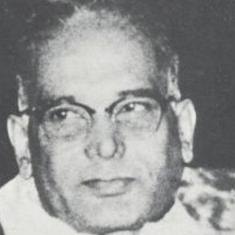After enduring disappointment in their individual events, the hopes and dreams of India’s 10m air rifle and pistol shooters’ hopes are pinned on the mixed team event, taking place in Tokyo on Tuesday, which is making its Olympic debut.
With a male and female shooter teaming up, the new discipline is a speedy, made-for-spectators format and brought in to replace three men’s only events in a bid to promote gender equality at the Games.
India will field two teams in each event and will go with the optimism of having done well in the short history of the new discipline at the ISSF World Cup level. It could be the perfect way to bounce back after the early debacle where only one shooter progressed to the final.
The teams
This event will be headlined by the pair of teen prodigies, Saurabh Chaudhary and Manu Bhaker. They may have come up short in solo events but in mixed team, they have gold medals in five of the six World Cups they have played, with a silver in the latest at Osijek – the last event before the Olympics. Yashaswini Singh Deswal and Abhishek Verma, world No 1 in their individual disciplines, will form the second team.
In the 10m air rifle mixed team event, Elavenil Valarivan and Divyansh Singh Panwar will be the first team while Anjum Moudgil, who was not chosen for the individual event, will partner Deepak Kumar as per the start list published.
Of course, the competition won’t be easy, especially with the pressure of not having done well in their first events. But with two shooters teaming up, it also offers some support for nerves like a team sport often does.
Based on track record, pistol holds the better chance for India with the teen pair having lost just one gold medal match in their career. But on Tokyo, the loaded field includes Osijek World Cup winners Artem Chernousov and Vitalina Batsarashkina, representing Russian Olympic Committee as well as newly-crowned men’s Olympic champion Javad Foroughi of Iran with Haniyeh Rostamiyan and China’s Jiang Ranxin and Wei Pang and Korea’s Choo Gaeun and Jin Jongoh. Both Indian pairs are capable of reaching the top four at least, but a lot will depend on their mental state on the day. As it often is the case in shooting.
Here are more details about the event.
Date and Time
10m air pistol mixed team
Qualification, stage 1: Tuesday, July 27, 5.30 AM IST
Qualification, stage 2: Tuesday, July 27, 6.15 AM IST
Medal rounds: Tuesday, July 27, 7.30 AM IST onwards
Teams: 20
10m air rifle mixed team
Qualification, stage 1: Tuesday, July 27, 9.45 AM IST
Qualification, stage 2: Tuesday, July 27, 10.30 AM IST
Medal rounds: Tuesday, July 27, 11.45 AM IST onwards
Teams: 29
Format and scoring
The mixed team is played across two stages in qualification, with then TEAM VS TEAM for medals.
The format of this event used to be similar to the individual multiple-team final with elimination, but has been since changed to make it shorter and snappier. Here’s how it works
Qualification
Stage 1– Each team member shoots three series of 10-shots. The 30 shots by each team member (total 60 shots) are to be fired in 30 minutes independently of their partner. The scores of each team member will be added together and the team results will be ranked. The eight top-ranked teams progress. The scores are not carried forwards to part two and all teams start from zero
Stage 2 – After a 10-minute break between, the eight pairs shoot two series of 10-shots by each team member. The 20 shots by each (total 40 shots) to be fired in 20 minutes, independent of their partner.
The top four teams go to the two medal rounds. The bronze medal match between the last two teams takes place followed, by the gold medal match between the top two teams.
NOTE: By virtue of format, the qualification stages will confirm a medal for the teams that finish in top two.
Medal round
Each team member will fire a single shot in a maximum time of 50 seconds and either athlete may fire first. The team with higher combined score of single shots fired by each member on command gets two points with one point for a tie. In case of equal scores, each team receives one (1) point. The decimal scoring will be used for both in finals.
The first team to 16 points with a difference of two wins. In case of a tie where both teams have scored 16 points, the match will continue with additional shot fired by both members of each team to decide the tie. If the scores are still tied the teams will continue to shoot additional shots on command until the tie is broken.
In an interesting twist, a coach or athlete may request a Time-out while the announcements are being made after the completion of a round. This can be requested once only and is for a maximum of 30 seconds.
What happens on Tuesday remains to be seen, but for now, India will still go in with hope.










